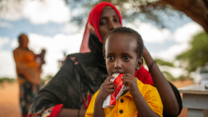Cost-efficiency analysis estimates the ratio of program costs to outputs created, allowing you to compare cost-per-output for programs which all produced the same output. Such analysis is useful when choosing among alternative delivery models (e.g. different modalities of transfer) during program design, during implementation to inform course corrections, or during final evaluation to assess performance in terms of value-for-money. However, finance and monitoring systems are not positioned to produce this data, so optimizing value-for-money is difficult in practice. To address this challenge, the Cash workstream of the Grand Bargain identified measurement of cost-efficiency and cost-effectiveness of cash assistance as a priority for the 2017-2018 workplan. USAID and the IRC volunteered to co-lead the sub-workstream with support from CaLP.
Cost-efficiency analysis might reveal the expected cost per dollar of value transferred through a cash program versus an in-kind distribution program. It can also help to uncover how contextual or programmatic features drive the cost per output. For instance, how will the cost per dollar transferred of a cash program change when targeting can be achieved through an existing social safety net platform, versus when targeting surveys must be undertaken directly by implementers? As these examples reinforce, the value of cost-efficiency data is comparative: we can judge the performance of a given program, or learn about how cost-efficiency will be affected by contextual features, only when we have other programs’ results to compare to.
This document discusses the methodological decisions which arise when conducting cost-efficiency analysis, and suggests a standard approach for dealing with these issues in the context of humanitarian basic needs programs. The methodology defined below corresponds to the method followed by the Systematic Cost Analysis (SCAN) tool, which is jointly managed by a Consortium comprised of Accion Contra el Hambre, CARE, International Rescue Committee, Mercy Corps, and Save the Children.
The point of comparative cost analysis is not that some analytical method will guarantee that your cost-efficiency estimate represents what that program would have cost if implemented in any context. This is simply impossible because of the differences in price levels, population needs, electronic banking infrastructure, among many other factors. Rather, the goal of comparative analysis is to understand what features are likely to drive differences in the cost-efficiency if programs are implemented differently or in different places.



